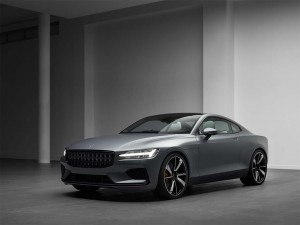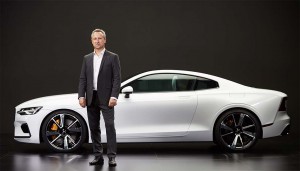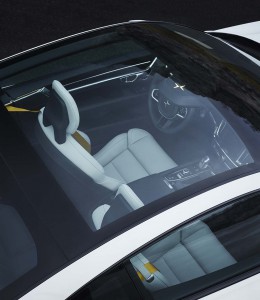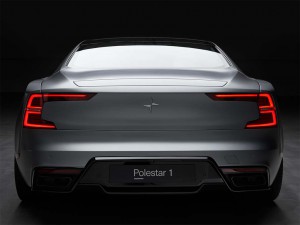It started out as a motorsports contender then went on to become Volvo’s in-house performance tuner. But with the debut of the Polestar 1 at this week’s Geneva Motor Show, Polestar formally transitions into Volvo’s high-performance sub-brand.
And it will focus exclusively on vehicles with electrified drivetrains. The Polestar 1 features a twin-motor plug-in hybrid coupe churning out an impressive 600 horsepower. Pure battery-electric offerings will follow, company officials said, while adding that they plan to take a novel approach to selling their low-volume, high-performance offerings.
“We will focus on electric mobility and make it a reality by having something that is not just a dogmatic electric vehicle but something that is desirable to drive,” said Thomas Ingenlath, the former head of Volvo design who, late last year, was reassigned to run Polestar.
(Live from Geneva! Click Here for our coverage of the 2018 Geneva Motor Show.)
When Volvo initially bought Polestar a few years back, the intention was to come up with sportier versions of the Swedish automaker’s existing products. But the subsidiary has now been given a much freer hand, according to Ingenlath.
“As a startup, we get to experiment with new offerings and service and design that we couldn’t do at Volvo,” he explained in Geneva. “We have a chance to do things that are not all-inclusive, that are more elite, edgy, higher profile. That are not for cars you buy for your family, but for yourself.”
The Polestar 1 isn’t entirely new from the ground up. It starts out with a shortened version of the Volvo V90 platform. And anyone who knows the history of the Swedish automaker is bound to recognize the uncanny resemblance between Polestar 1 and the classic Volvo P1800 of a half-century back — albeit with very modern details like Volvo’s Hammer of Thor headlights.
The 2+2 GT is motivated by a drivetrain similar to the Volvo T8 Twin-Engine. There’s a four-cylinder 2.0-liter gas engine that is both turbo and supercharged and which drives the front wheels. It’s paired with two motors mounted on the rear axle. The combination deliver 600 horsepower and a hefty 738 pound-feet of torque. That should be good for spinning some tires, though Polestar has not yet said what the car’s 0 to 60 launch time is yet.
It does claim the plug-in hybrid has the longest range in its class, 150 km, or about 94 miles, using the European NEDC test cycle. Typically, the EPA ratings cut that by 25% or more, but even around 70 miles that would be substantially better than, say, the Chevrolet Volt or any other current PHEV.
The drivetrain layout not only provides through-the-road all-wheel-drive but allows the Polestar 1 to torque vector through tight corners, increasing power to the rear outer wheel to enhance aggressive steering.
Polestar claims to be generating quite a bit of early interest, with 6,000 initial hand-raisers. How that will translate into actual sales we’ll find out next week when it officially opens up its order bank. But the number has begun “gathering momentum from the moment the car was revealed,” said Ingenlath, adding that, “With our current plans to produce 500 cars per year, it’s possible that we have exceeded our production potential in these early stages.”
According to the former Volvo designer, Polestar plans to sidestep the traditional retail model and will go with a subscription approach to sales. In some markets, such as the U.S., it will still need to distribute through franchised dealers. But the ordering process will be skewed to online.
(Click Here for a round-up of all the noteworthy new products making their debut at the 2018 Geneva Motor Show.)
Volvo already has some experience with this, especially in the States where the latest version of the V90 wagon can only be special-ordered. And the automaker is experimenting with a subscription approach for the new XC40. Buyers go online and spec out the vehicle the way they want. Pricing then includes everything but gasoline, covering not only service and repairs but taxes, fees and insurance.
Pre-orders will start on March 13 in 18 markets, including the U.S., China, Sweden and Germany, buyers asked to put down fully refundable €2,500 deposits – which would translate into $3,104.30 for Americans.
As for the vehicles, they will be produced at the new Polestar Production Centre in Chengdu, not far from the headquarters of Volvo’s – and Polestar’s – parent, Geely. Volvo now operates two assembly plants for its mainstream models in China. It was also the first automaker to export Chinese-made vehicles to the U.S.
(Click Here for a review of the new Volvo XC40.)




